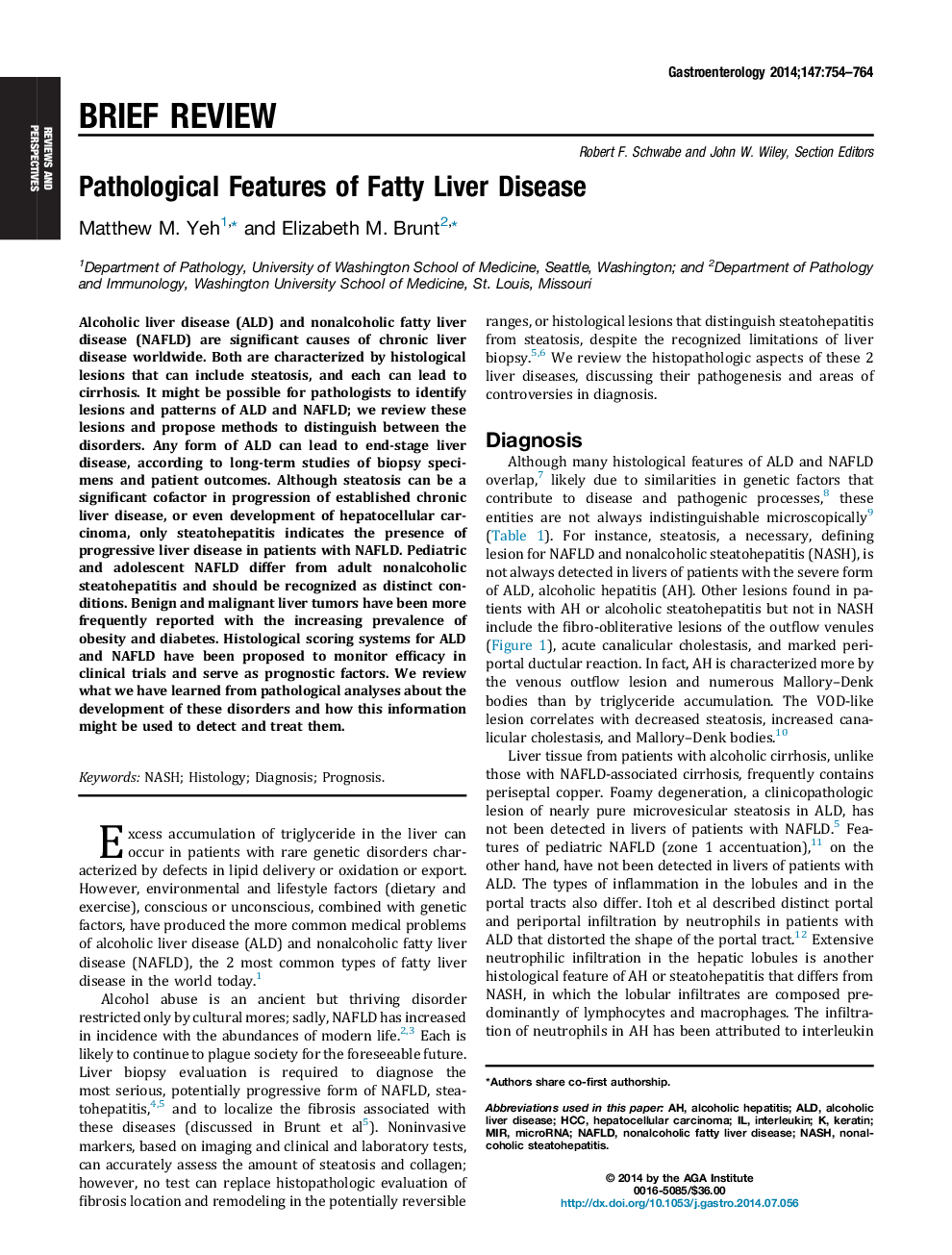| کد مقاله | کد نشریه | سال انتشار | مقاله انگلیسی | نسخه تمام متن |
|---|---|---|---|---|
| 3293189 | 1209815 | 2014 | 11 صفحه PDF | دانلود رایگان |
Alcoholic liver disease (ALD) and nonalcoholic fatty liver disease (NAFLD) are significant causes of chronic liver disease worldwide. Both are characterized by histological lesions that can include steatosis, and each can lead to cirrhosis. It might be possible for pathologists to identify lesions and patterns of ALD and NAFLD; we review these lesions and propose methods to distinguish between the disorders. Any form of ALD can lead to end-stage liver disease, according to long-term studies of biopsy specimens and patient outcomes. Although steatosis can be a significant cofactor in progression of established chronic liver disease, or even development of hepatocellular carcinoma, only steatohepatitis indicates the presence of progressive liver disease in patients with NAFLD. Pediatric and adolescent NAFLD differ from adult nonalcoholic steatohepatitis and should be recognized as distinct conditions. Benign and malignant liver tumors have been more frequently reported with the increasing prevalence of obesity and diabetes. Histological scoring systems for ALD and NAFLD have been proposed to monitor efficacy in clinical trials and serve as prognostic factors. We review what we have learned from pathological analyses about the development of these disorders and how this information might be used to detect and treat them.
Journal: Gastroenterology - Volume 147, Issue 4, October 2014, Pages 754–764
